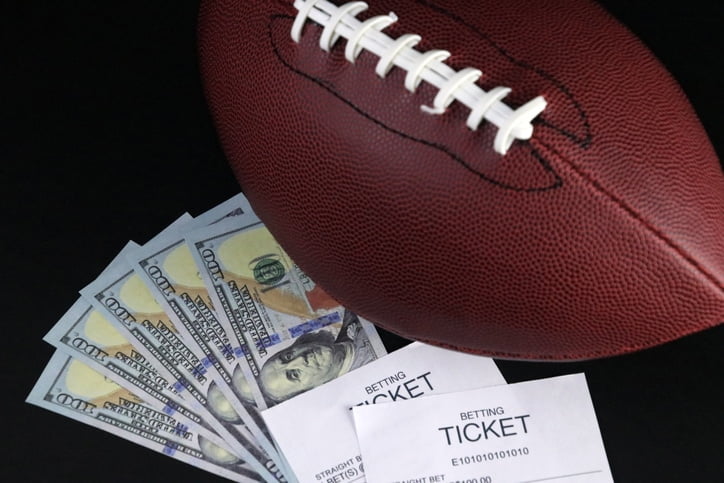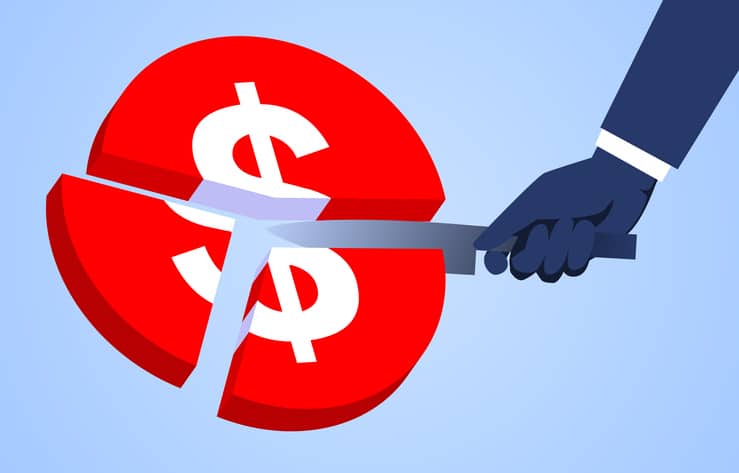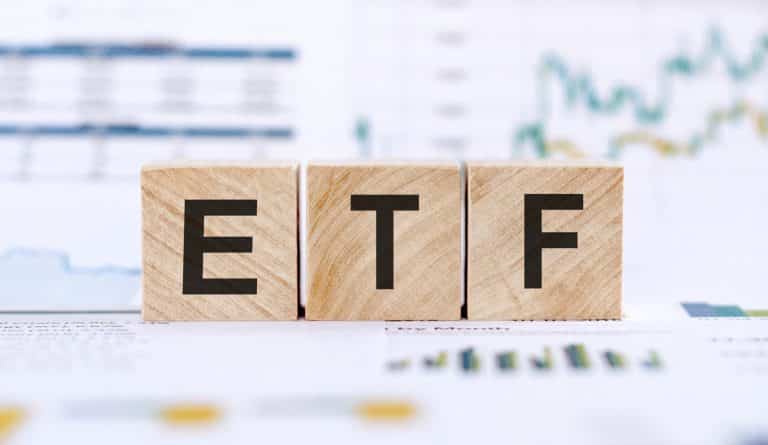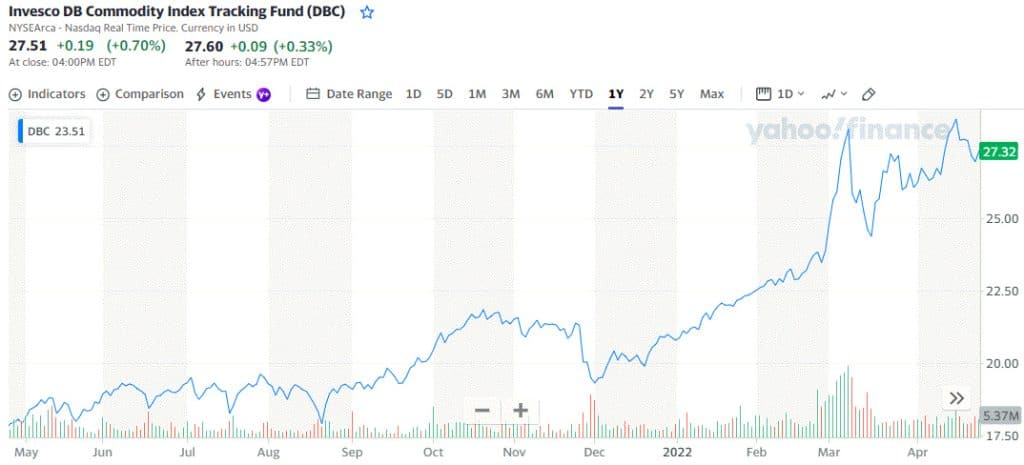Sports Betting & Gaming stocks are outperforming in recent weeks. Some of the more recent catalysts include strong earnings, revenge travel, Vegas occupancy, China slowly opening and the start of the NFL & College Football seasons. California also has a ballot measure for legalization coming in November that could also be huge catalyst for the industry.
With those factors in mind, lets take a look at the iBET (IBET) Sports Betting & Gaming ETF which is up nearly 22% in the past month and some of the funds top holdings.
Top Holdings of the iBET (IBET) Sports Betting & Gaming ETF
Draft Kings (DKNG) – One of the most heavily traded stocks in this industry, it’s one of the best known brand names and was part of the meme stock frenzy. For the three months ended June 30, 2022, DraftKings reported revenue of $466 million, an increase of 57% compared to $298 million during the same period in 2021. “DraftKings had an excellent second quarter, exceeding expectations for revenue and Adjusted EBITDA,” said Jason Robins, DraftKings’ co-founder, Chief Executive Officer and Chairman of the Board. Draft Kings has been on a tear up nearly 80% in the past month.
Current iBET (IBET) Sports Betting & Gaming ETF Exposure – 8.06%
Flutter (FLTR) – Flutter is mostly known in the US by its subsidiary Fan Duel. Flutter issued its first half 2022 earnings report that showed revenues increased 10.9% year-over-year to $4.12 billion, aided in part by the success of the company’s sports betting segment in the U.S. led by FanDuel. “We are particularly pleased with momentum in the US where we extended our leadership in online sports betting with FanDuel claiming a 51% share of the market and number one position in 13 of 15 states, helping contribute to positive earnings in Q2,” Flutter CEO Peter Jackson said. So while Draft Kings is more heavily traded FLTR is actually the market share leader in the US currently. At one point it was believed that Fan Duel would be going public, but the recent market has derailed IPOs. Keep an eye on a potential partnership with FuboTV and Flutter when it comes to sports betting. Flutter has a stronghold on European Soccer and FuboTV is well known for its Soccer package.
Current iBET (IBET) Sports Betting & Gaming ETF Exposure – 5.61%
Penn Entertainment (PENN) – Penn is most known for it’s partial ownership of Barstool Sports, the Dave Portnoy lead sports, gaming and entertainment company. They also own The Score and MyChoice and a host of Racetracks and Casinos. The company recently changed its name to Penn Entertainment from Penn National Gaming. In terms of growth Penn has been able to grow its EPS at 39% per year over three years, CEO Jay Snowden pointed out that $PENN beat consensus on revenues and EBITDAR and generated sequential upside over last quarter due to “performance of our interactive segment and strong results at our retail operations despite a tough comp against the second quarter last year.”
Current iBET (IBET) Sports Betting & Gaming ETF Exposure – 4.81%
Other Interesting Holdings of the iBET (IBET) Sports Betting & Gaming ETF
The Lottery Corporation (TLC – AU) – The Lottery Corporation a company that operates in Australia, recently went through a de-merger with Tabcorp TAH – AU. Recent rumblings suggest that the de-merger was made to make The Lottery Corporation, which is a great cash flow business more attractive for a potential buyout down the road.
Bally’s (BALY) – Bally’s Corporation reported second-quarter net income of $59.5 million. On a per-share basis, the company had net income of 98 cents. Earnings, adjusted for non-recurring gains, came to 32 cents per share. The results beat Wall Street expectations. Ballys is one to watch in the future as they are making a major push into Vegas with their purchase of the Tropicana Hotel. Bally’s is also working on a new waterfront casino in Chicago.
We find the iBET (IBET) Sports Betting & Gaming ETF to be the most interesting of the Sports betting ETFs because it is the only actively managed fund in the space and not tied to an index. YTD iBET has outperformed BETZ by nearly 5%. Jeffrey Kamys the Chief Investment Strategist of the fund noted that, “with so many mergers, territorial carveouts and expansion plans happening in the space, active management is the only thing that makes sense” Kamys also note that the Sports Betting & Gaming industry is currently in, “inning zero” especially when it comes to US expansion.





 Tesla (TSLA) – Started in the early 2000’s, Tesla has rapidly grown to become the leading supplier in electric vehicles by a large margin with a worldwide EV market share of around 21%. TSLA has been innovating the EV market by launching 16 car models as well as revolutionizing the driving experience with autopilot, software updates, power supply, and the specifications of the cars. They have been ramping up production to keep up with demand by launching their second Gigafactory in Texas aiming to create 500,000 Model Y SUVs a year and has already delivered more than 300,000 EVs in the March quarter, up +68% year-over-year. TSLA is currently trading around $715 and has announced plans for a stock split. The split amount has not yet been disclosed but is expected to be voted on around October. The three ETFs with the most exposure to TSLA are: Consumer Discretionary Select Sector SPDR Fund (XLY) 17.27%, the Vanguard Consumer Discretionary ETF (VCR) 15.19%, and the Fidelity MSCI Consumer Discretionary Index ETF (FDIS) 13.87%.
Tesla (TSLA) – Started in the early 2000’s, Tesla has rapidly grown to become the leading supplier in electric vehicles by a large margin with a worldwide EV market share of around 21%. TSLA has been innovating the EV market by launching 16 car models as well as revolutionizing the driving experience with autopilot, software updates, power supply, and the specifications of the cars. They have been ramping up production to keep up with demand by launching their second Gigafactory in Texas aiming to create 500,000 Model Y SUVs a year and has already delivered more than 300,000 EVs in the March quarter, up +68% year-over-year. TSLA is currently trading around $715 and has announced plans for a stock split. The split amount has not yet been disclosed but is expected to be voted on around October. The three ETFs with the most exposure to TSLA are: Consumer Discretionary Select Sector SPDR Fund (XLY) 17.27%, the Vanguard Consumer Discretionary ETF (VCR) 15.19%, and the Fidelity MSCI Consumer Discretionary Index ETF (FDIS) 13.87%.
 SPDR S&P Dividend ETF (SDY) – SDY tracks the S&P High
SPDR S&P Dividend ETF (SDY) – SDY tracks the S&P High 
